Want to find out how you can grow your favorite peppers every year without buying new seeds? Learning how to save seeds from peppers is a simple yet powerful skill that can transform your gardening experience.
Whether you like green peppers, sweet peppers, or hot peppers, there are many pepper types to choose from. Not only does it save money, but it also preserves heirloom varieties and adapts plants to your local conditions.
This guide will walk you through the entire process of saving pepper seeds. You’ll learn how to choose the best peppers, harvest and clean the seeds, and store them properly. I’ll also discuss the challenges and rewards of saving seeds from hybrid peppers.
Ready to become a pro at saving seeds? Dive in and discover how you can ensure a bountiful pepper harvest season after season. Your garden will thank you!
- Related Article: Saving Your Own Seeds
6 Key Takeaways on Saving Pepper Seeds
- Saving pepper seeds involves selecting fully ripe, healthy peppers from vigorous plants for optimal results.
- It’s essential to separate seeds carefully from the pepper flesh and clean them thoroughly to ensure high-quality seeds.
- Proper drying of pepper seeds in a well-ventilated, non-sunny area is crucial to maintain their viability.
- Store dried pepper seeds in airtight containers with desiccants in cool, dark places like refrigerators for extended viability.
- Hybrid pepper seeds can be saved but may result in unpredictable traits due to genetic variability in subsequent generations.
- Seed saving promotes sustainability, preserves heirloom varieties, and adapts plants to local conditions over generations.
Overview of Pepper Seeds: Why Save Them?
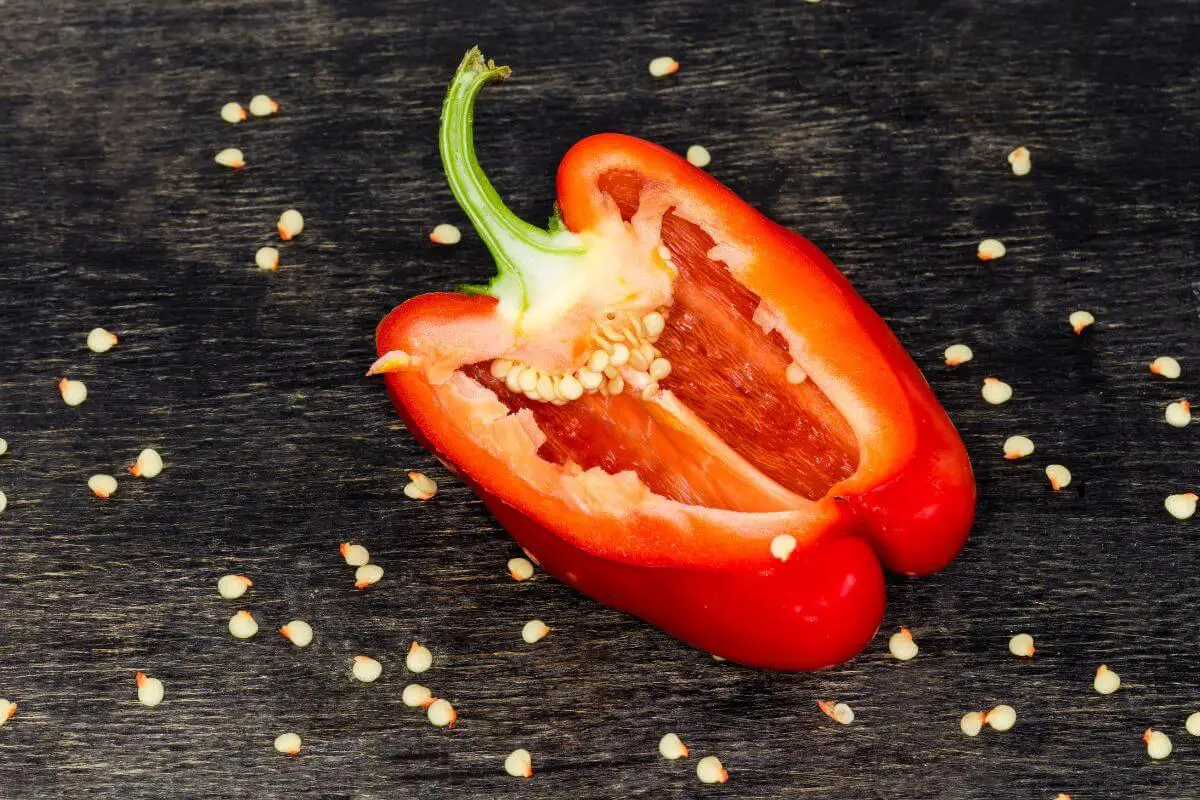
Peppers are part of the Capsicum genus in the nightshade family. Though they are perennials, we often grow them as annuals due to climate.
Peppers are related to tomatoes, eggplants, and potatoes. They come in many colors and can be sweet or spicy. This makes them versatile in cooking.
Saving pepper seeds means you collect, process, and store seeds from healthy peppers. You pick ripe peppers, take out the seeds, clean and dry them, and store them properly.
People save pepper seeds for many reasons, and these are to:
- Save money
- Keep heirloom varieties
- Adapt plants to local conditions
- Maintain genetic diversity
- Be self-sufficient
- Breed new pepper varieties
Aside from pepper seeds, you can also save and grow tomato seeds, which are very common for seed saving. I grow both peppers and tomatoes in my yard.
How to Save Seeds From Peppers
Follow these five simple steps to save your pepper seeds.
Step 1 – Choose the Best Peppers for Their Seeds
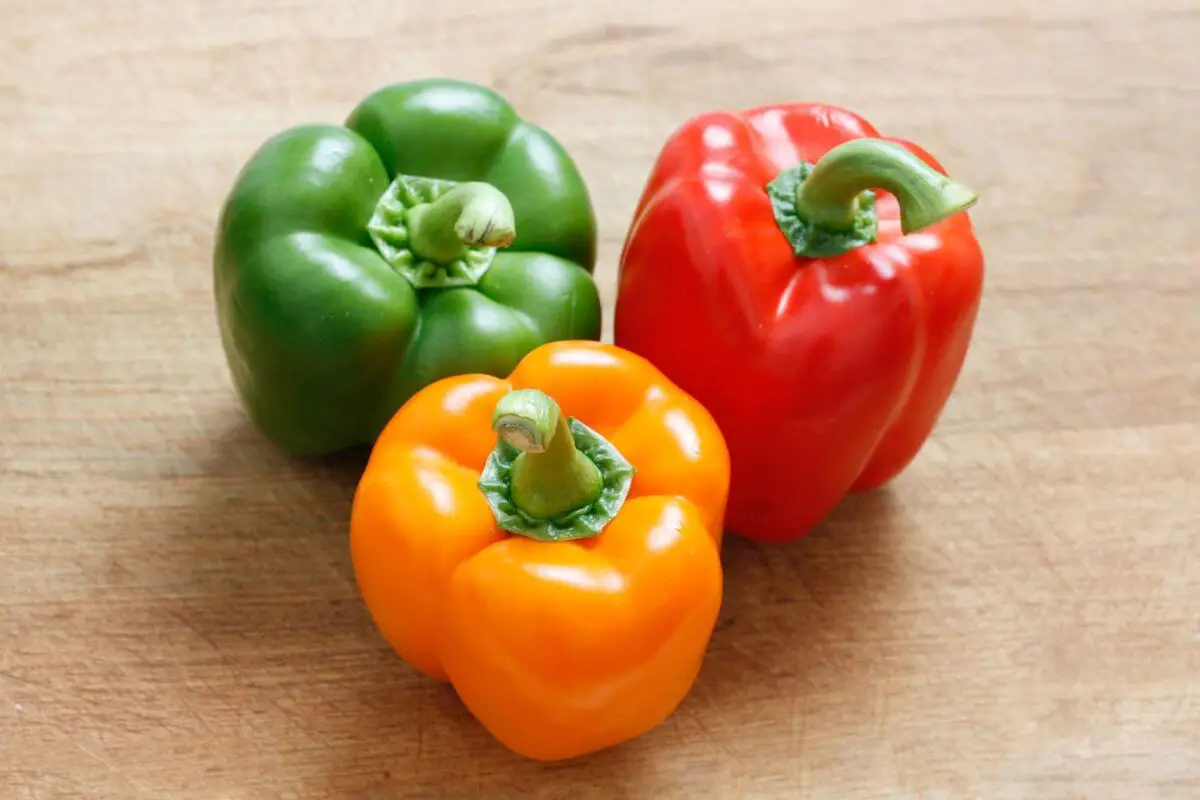
When you save pepper seeds, pick fully ripe peppers. They should be at their final color — red, yellow, or orange, depending on the type.
Choose peppers from healthy plants. Look for good production and disease resistance. Avoid peppers with signs of disease, pest damage, or mold.
To get seeds that grow true to the parent plant, pick from plants protected from cross-pollination. For heirloom or open-pollinated varieties, choose peppers from several plants of the same type. This keeps genetic diversity.
Let peppers dry on the plant for 1-4 months before harvesting. This can improve germination rates. When handling hot peppers, wear goggles, gloves, and a dust mask. This protects you from capsaicin irritation.
Step 2 – Harvest the Pepper Seeds
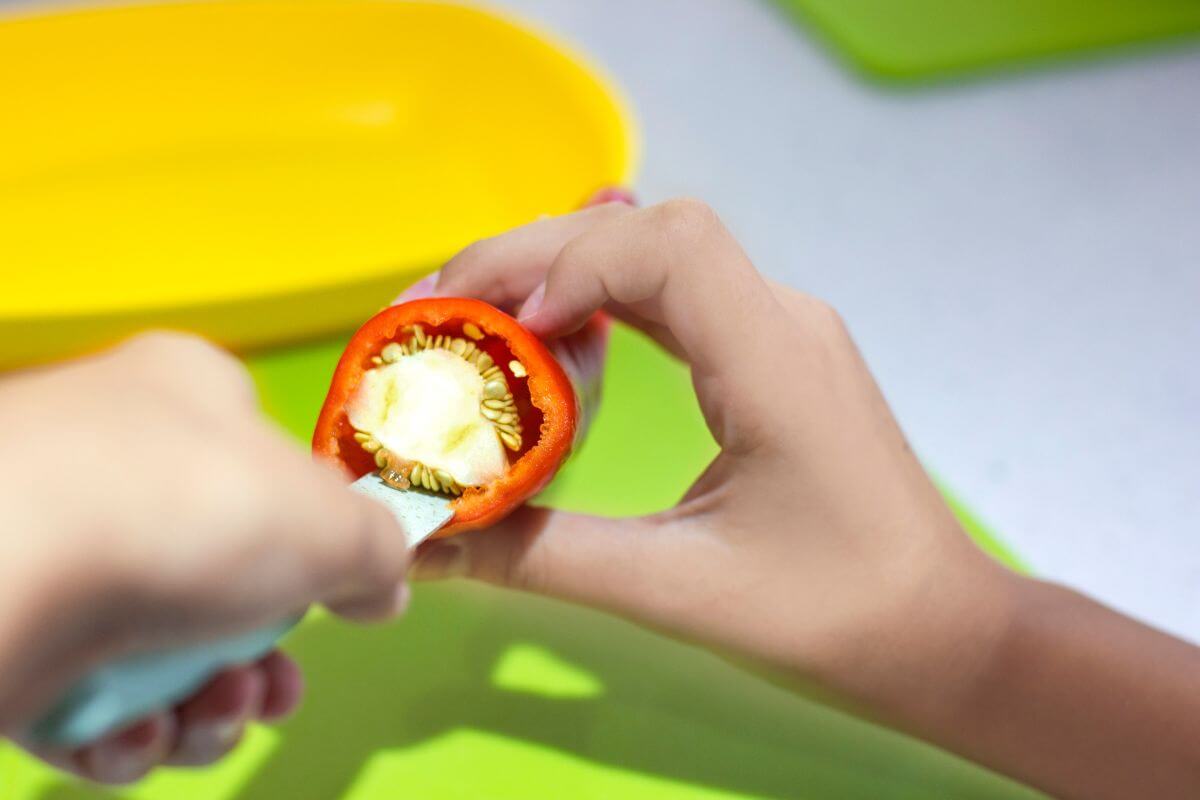
To get harvest seeds, cut the pepper open lengthwise or around the top. This depends on the type of pepper. Scrape out the seeds from the center with a knife or your fingers. If you are handling hot peppers, wear gloves to avoid skin irritation.
Separate the seeds from any pepper flesh or membrane by hand or rinse them in a colander under running water.
For larger quantities, use the blender method. Blend the peppers with water. The floating residue and immature seeds will rinse away. The good seeds will sink to the bottom.
If you have dried peppers, tear open the skin. Shake or rub the seeds onto a small mesh surface to separate them.
Step 3 – Remove Damaged Pepper Seeds
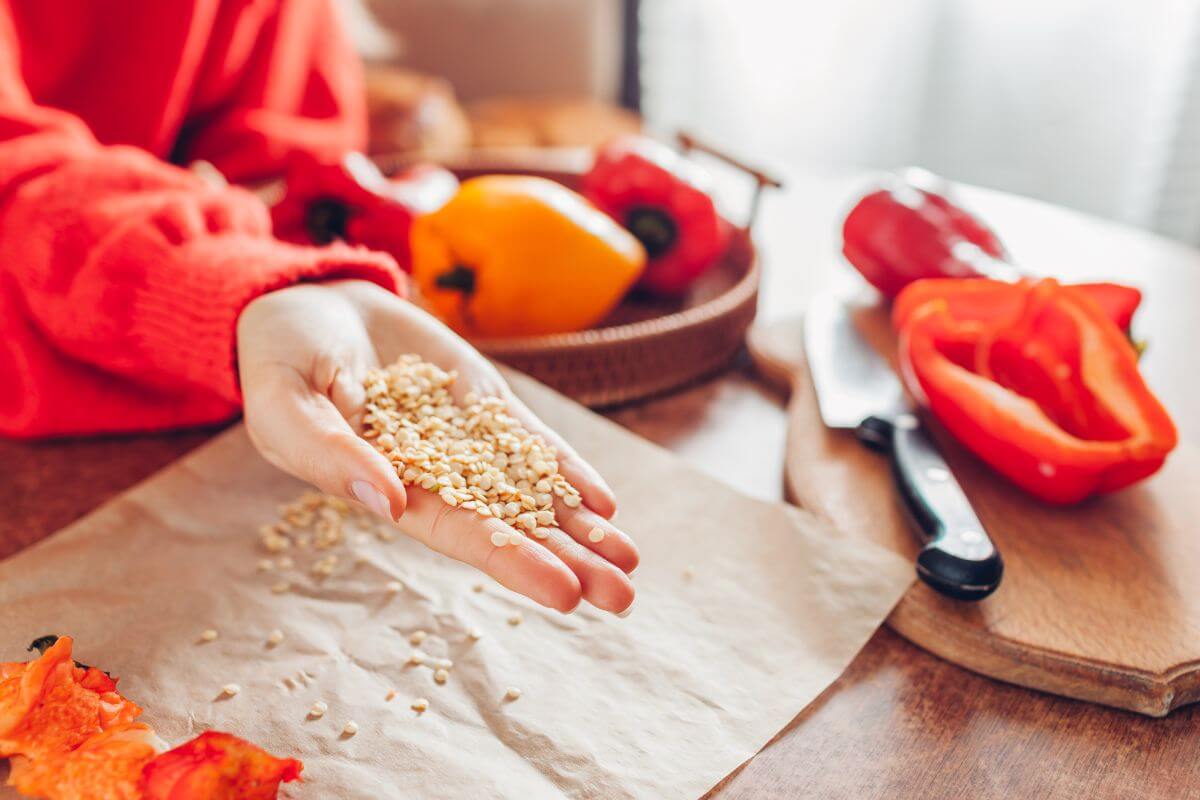
After you harvest pepper seeds, you need to remove any damaged ones. This ensures you keep only high-quality seeds for planting.
Spread the seeds on a flat surface and inspect them. Look for discolored, misshapen, shriveled seeds, or seeds with cracks, holes, mold, or fungus.
Check the size and weight. Smaller and lighter seeds are often damaged or underdeveloped. Remove these smaller seeds.
Do a floatation test. Place the seeds in water. Good seeds sink. Damaged or non-viable ones float. Remove the floating seeds.
Feel the texture. Gently squeeze the seeds between your fingers. Healthy seeds feel firm. Damaged ones feel soft or hollow. Use tweezers or your fingers to remove the damaged or non-viable seeds.
Step 4 – Dry the Pepper Seeds
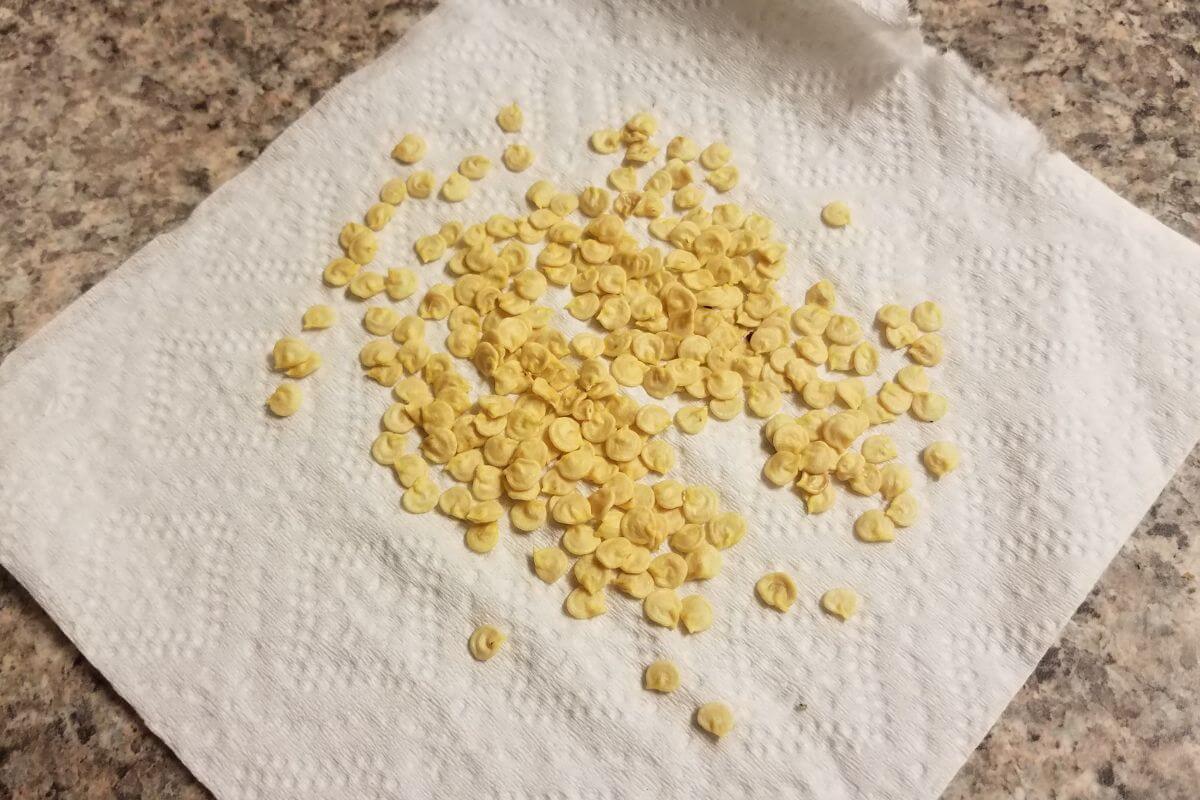
To dry seeds effectively, spread them out on a flat surface. You can use ceramic plates, coffee filters, paper towels, or dehydrator screens. Do not turn on the dehydrator yet.
Place the seeds in a well-ventilated area away from direct sunlight. Room temperature with good air circulation works best. Let the seeds air dry for 5-7 days. In humid climates, drying may take longer.
Use a small fan to improve airflow around the seeds. Stir or jostle the seeds daily to ensure even drying. After about a week, test the seeds for dryness. Try to snap a seed in half with your fingers. Well-dried seeds should crack cleanly.
For faster drying, use a food dehydrator set to a low temperature, not exceeding 100°F (38°C). Spread the seeds on the dehydrator trays in a single layer. Check them periodically to prevent over-drying. This should take about 6 hours.
Step 5 – Store the Pepper Seeds
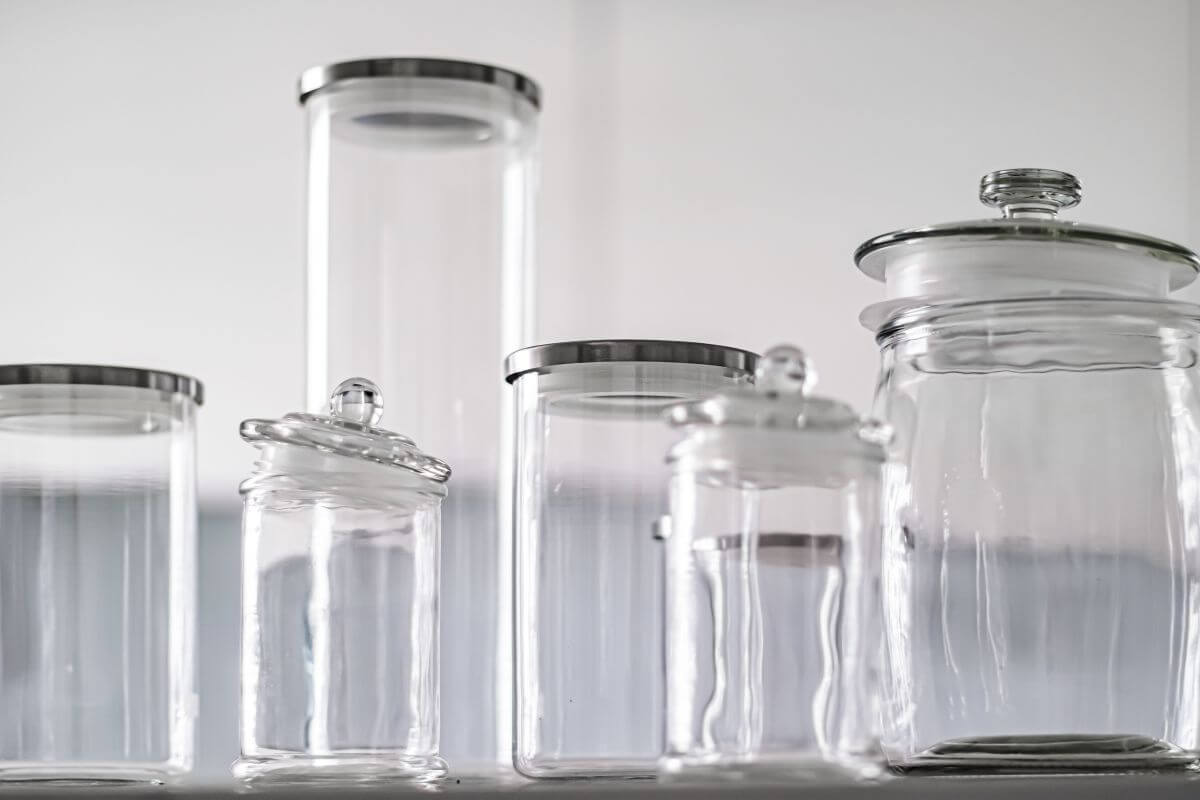
Drying pepper seeds is just the first step. Proper storage is key to keeping them viable. Use airtight containers like small glass jars, plastic zip-lock bags, or paper envelopes inside a sealed container.
Label each container with the pepper variety, the date of collection, and any important plant details.
To keep seeds dry, add a desiccant like silica gel packets or a tablespoon of powdered milk wrapped in tissue. Store these containers in a cool, dark, dry place. A refrigerator set to 35-50°F (1-10°C) or a cool basement or closet works best.
For long-term storage, use a freezer. Make sure the seeds are completely dry first. Check them periodically for moisture or mold. Before planting, let seeds reach room temperature inside the sealed container to avoid condensation and keep them viable.
How Long Will My Pepper Seeds Last?
Pepper seeds can last 3-5 years if stored properly. Some gardeners have even germinated seeds up to 8-10 years old by keeping them in glass jars or airtight containers.
Several factors affect seed longevity. Keep seeds below 85°F (30°C) and avoid humidity. Seeds should stay dry to prevent mold. Studies show organic pepper seeds have a P50 value of 35-43 months, which means they lose 50% of their viability in that time (source).
To make your seeds last longer, store them in cool, dark, and dry places. Use airtight containers or glass jars to keep them fresh.
Can I Save and Grow Hybrid Pepper Seeds?
The answer to this question is both yes and no. Saving seeds from hybrid peppers may be riskier, but it isn’t impossible.
Hybrid peppers come from blending two different pepper plants. This mix creates new traits. The first generation, called F1 hybrids, usually grow strong and resist diseases better because they inherit a mix of genes from their parents.
Seeds saved from F1 hybrids (F2 generation) won’t grow into plants exactly like the first generation. Instead, they can have a wide range of traits from their original parents, which makes their growth unpredictable. This mix of traits makes it harder to save and grow hybrid pepper seeds and might mean losing the best qualities in later generations.
Even though it’s tough, saving seeds from hybrid peppers gives you chances to try new things and find new types of peppers.
Practical tips for saving hybrid pepper seeds:
- Keep different pepper varieties’ flowers apart during pollination to prevent mixing.
- Select the best peppers with desired qualities for seed saving.
- Record detailed information about parent plants and their traits for future reference.
Final Thoughts on How to Save Seeds From Peppers
Saving seeds is a smart way to grow peppers that thrive in your climate. By keeping seeds from the healthiest plants with the best-tasting fruit, you make sure these traits continue.
Open-pollinated seeds are now easier to get thanks to the internet. These seeds are sold to help gardeners save seeds and grow their own plants.
Some seed companies and farms are moving away from single-use products. They offer seeds that you can keep and grow again and again.
Seed saving is also a great group activity. Look for local seed swaps. If there isn’t one nearby, try starting one in your community. You can also check out online shops and the Seed Savers Exchange website.
Saving Pepper Seeds FAQs
1. How Do I Know if Pepper Seeds Are Viable?
To check seed viability, perform a floatation test: place seeds in water; viable ones sink, while non-viable ones float. Also, inspect for plumpness, firmness, and lack of damage.
2. What Is the Best Way to Store Pepper Seeds?
Store pepper seeds in airtight containers labeled with a variety name and collection date. Include a desiccant-like silica gel to absorb moisture, and store it in a cool, dark place.
3. Can I Save Seeds From Store-Bought Peppers?
Yes, you can save seeds from store-bought peppers, but they may not always produce plants true to the parent variety due to possible cross-pollination during growth.
4. Can I Save Seeds From Hybrid Peppers?
Yes, but seeds from hybrid peppers (F1 hybrids) may not grow true to the parent plant’s characteristics in subsequent generations (F2). It’s best to save seeds from open-pollinated or heirloom varieties for consistent traits.
Here are more articles on how to save seeds from other plants:

